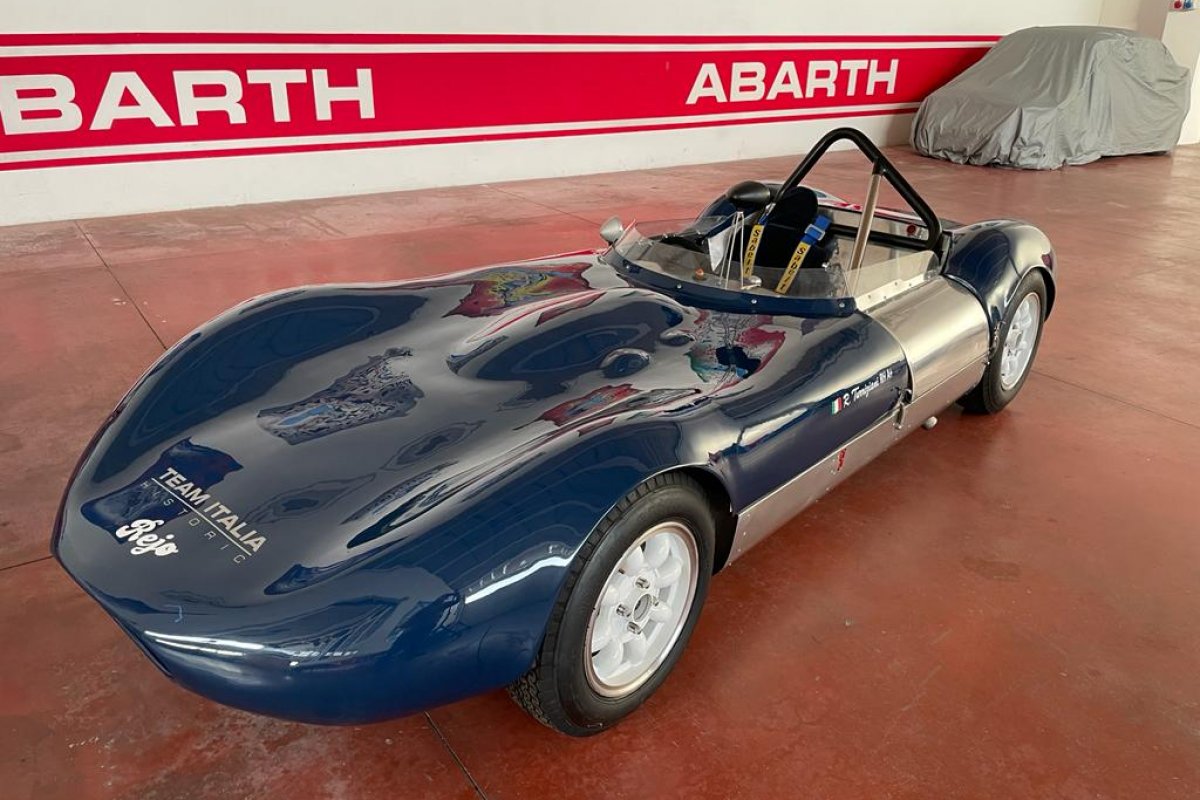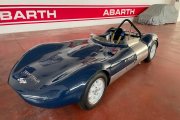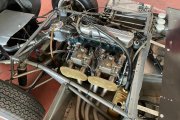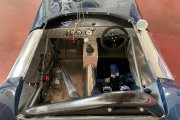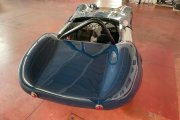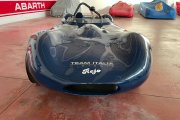1959 Rejo Mk3 1.100
The Rejo Mk3 is one of 12 cars designed and built by Rod Easterling in the early 1960s, cars so well built that Colin Chapman offered him a job as a designer.
The Rejos were designed for club competitions and their distinguishing feature was the ability to remain competitive season after season.
Rod Easterling had an engineering background acquired only through experience, reading books and attending meetings of the London Special Builders Group of the 750 MC, which began in 1958, attended by the likes of designers Eric Broadley, Len Terry, Brian Hart and others who they followed in the footsteps of 750 MC's other great member, Colin Chapman.
"Rejo" comes from the initials of Rod Easterling and Jim Osborn who met while they were both young amateur cyclists.
Before long Rod was planning to build his first car, designing a copy of the Lotus 6 chassis but with wishbone front suspension replacing the Lotus swing axles. Nicknamed Rejo Mk 1, it was destroyed at Silverstone after only a few races. Soon after followed the Rejo Mk2, the first car built with a full wraparound body specifically for the 1172 championship. It was born as a result of a team effort between RE, JO and the Inglis brothers.
Beneath the Rejo Mk2's perfectly finished shell, which echoed the Lotus Eleven at the front and the Lola Mk 1 at the rear, was a robust welded spaceframe.
The car was raced a few times in 1959 and, around the same time, the quartet built another very similar car for the Inglis brothers. This became the first Mk3 and was different in that it had a redesigned tail section with small fins.
The team built a further two Mk3s for the Inglis brothers and Rod, both cars featuring very light but fragile fiberglass body sections front and rear. Rod's car (Mk3/3) kept the active rear axle while Ron and Dave Inglis' car had the IRS. During 1961 all three drivers achieved victories in the 1172 Championship. At the end of the season the bodyshell was strengthened because during a race Rod had the disconcerting experience of a tear that gradually opened the bonnet,
Another car was sold to Pat Ross-Tuppin, who also had a Climax engine fitted together with irs, this time using a diff-casting Gemini FJ and alloy wheels. Although only slightly modified Mk 3s, these two cars bore the Mk 4 designation. During 1962 no less than five Rejos were seen on British circuits. In June at Snetterton they achieved a classy 1-2-3 in a Sport and GT race (Easterling, Ron Inglis, Ross-Tuppin). Ron Inglis had two wins, five seconds and two thirds in the 1172 championship that year.
Another car was sold to Pat Ross-Tuppin, who also had a Climax engine fitted together with irs, this time using a diff-casting Gemini FJ and alloy wheels. Although only slightly modified Mk 3s, these two cars bore the Mk 4 designation. During 1962 no less than five Rejos were seen on British circuits. In June at Snetterton they achieved a classy 1-2-3 in a Sport and GT race (Easterling, Ron Inglis, Ross-Tuppin). Ron Inglis had two wins, five seconds and two thirds in the 1172 championship that year.
The Mk5 was not produced while the Rejo Mk 6 was an advanced design by all standards for the time, but the fact that it was designed and built entirely by one man makes it truly remarkable. It would have been a considerable achievement if Rod had only built one car, but as it stood he built a series of three. For the first time, Rod turned to semi-monocoque construction and the Mk6 chassis was made with two side tubes and floorpan with front and rear multi-tubular sub-frames.
Colin Chapman approached Rod in early 1965. After an interview in which Easterling stated that he was an amateur with little draftsmanship, Chapman offered him a design job on an unspecified Lotus project. However, Rod rejected that proposal which has every reason to consider a recognition.
Of the 12 cars built by Rod Easterling or others to his designs, four are known to survive, along with one chassis of the Mk 3 chassis now in the possession of Roger Ealand.
The proposed car was imported into Italy by Francesco Fazzalari who used it in many national competitions, before selling it to Mario Dell'Isola who raced it and in turn sold it to the current owner in 2004. The car is in very good and original condition, race ready and equipped with numerous spare parts and spare wheels.
P.O.A.
